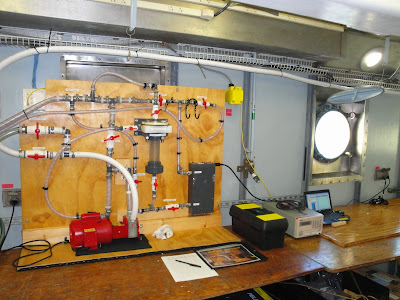Yesterday morning we recovered a Mixed Layer Float (MLF; from U. Washington) that had been drifting about the SPURS area for the past 6 months. Amazingly, it drifted right into the center of the moored array just as Endeavor reached the area. Jason Smith and Dave Rivera used the small boat the grab the MLF, tow it close to Endeavor, and attach it to the crane for recovery.
Our colleagues at NOAA/PMEL in Seattle contributed two moorings to the SPURS moored array. Both have a surface buoy with meteorological instruments, and a wave-powered "prawler" which collects underwater profiles of temperature and salinity.
The PICO-East mooring lost its surface buoy several weeks ago. Yesterday, after a good deal of searching and head-scratching, we recovered the remaining underwater portion of this mooring including the prawler. Each moorings consists of several miles of rope and wire -- in the case of the damaged PICO-East much of the rope and wire was recovered in the form of giant wuzzles. We wound everything, wuzzles and all, onto the winch last night then cleared it off by hand this morning.
We recovered the entire PICO-North mooring today. No searching. No head-scratching. No wuzzles.
Over the next few days we expect to recover 3 Wave Gliders and the gigantic WHOI flux mooring.































